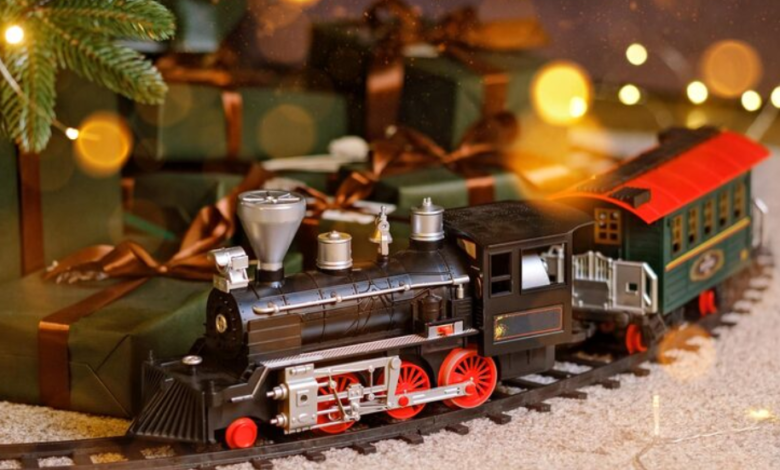Rediscovering Vintage Model Train Sets: Nostalgia, Craftsmanship, and Collecting Passion

Vintage model train sets evoke the charm of bygone eras and awaken nostalgia for many. These miniature railways represent more than toys they are artifacts of craft, design, and personal history. Whether inspired by memories of childhood or the allure of intricate scale artistry, vintage train sets captivate collectors and hobbyists alike. In this article we explore the origins of model trains, trace their golden age, examine why vintage sets remain so popular, highlight collecting trends, and introduce a curated collection that makes discovery easy.
The Origins of Model Train Sets
The history of model trains stretches back more than a century. The first mass-market vintage model train sets were introduced by a German company in the early 1890s. Those early offerings laid the foundation for what would become a beloved hobby. The development of electric model trains emerged around the turn of the century, making rideable displays possible within the home. By the 1920s the hobby was thriving and model trains had become an established pastime. The 1930s saw the introduction of standardized scales such as HO and O, bringing increased realism and compatibility to miniature railways.
The Golden Age of Vintage Train Sets
The early twentieth century stands out as the golden age of collectible model trains. During the 1920s and 1930s, train sets evolved from simple toys into finely detailed replicas. Popular scales like HO and O became standard, and became increasingly intricate and accurate. After the war, plastic replaced metal as the primary material in many models. This transformed production in the 1950s, making more detailed and affordable sets accessible to wider audiences. By the early 1950s model trains had become the top toy for boys, reflecting both cultural values and technological progress.
Why Vintage Model Train Sets Remain So Beloved
Several factors help explain the enduring appeal of vintage train sets.
Timeless Nostalgia
Collectors often seek out vintage train sets because they evoke childhood memories. For many, the sight of a vintage locomotive or original packaging rekindles feelings of warmth, wonder, and simpler times.
Craftsmanship and Design
Early model trains were crafted from sturdy materials such as tin, metal and early plastics. The design reflected a balance of artistry and mechanical precision. Skillfully engineered locomotives and rolling stock often featured fine detail, hand painted finishes, and complex mechanics.
Historical Significance
These models serve as miniature time capsules of industrial and design history. Vintage sets from companies such as Lionel, Märklin, American Flyer, Marx and others capture the evolution of technology and toy manufacturing. Classic lines such as the Standard Gauge developed by Lionel in the early 1900s reflect shifting consumer trends and changing manufacturing processes.
Collectible Value
Vintage train sets often appreciate in value, especially those in excellent condition or with original packaging. Pre-war models command high prices among collectors. For many, the thrill of finding a rare set or completing a themed collection is a core appeal. For example, a pre-war locomotive can sell for several hundred or even thousands of dollars, depending on rarity, originality and condition.
Iconic Manufacturers and Their Contributions
Several companies played pivotal roles in the development of vintage train sets.
Märklin led early mass production with high-quality European models. Lionel introduced electric toy trains to the American market and pioneered the Standard Gauge scale. American Flyer, Ives, and Marx each contributed iconic designs and helped popularize the hobby across different eras. Plasticville, introduced by Bachmann Industries in the 1940s, offered snap-together buildings that became vital accessories to O gauge layouts. Its retro styling remains emblematic of mid-century suburban rail layouts and is highly collectible today.
Tips for Collecting Vintage Model Train Sets
If you are thinking about beginning or expanding a collection here are several helpful guidelines:
- Condition matters. Collectors place high value on trains and accessories in original, intact condition. Boxed items are especially prized. Missing parts, damage, or repainting can greatly reduce value.
- Know the era. Pre-war and early post-war sets are more desirable due to scarcity. Knowing manufacturer marks, production years, and material types can help determine authenticity.
- Look beyond the engines. Accessories such as buildings, track segments, catalogs, handbooks, and catalogs enrich a collection and offer insight into how sets were built and marketed.
- Join collector communities. Associations like the Train Collectors Association help maintain grading standards and connect hobbyists with historical archives, price guides, and preservation tips.
- Understand rarity and demand. Limited editions, promotional series, or discontinued models often fetch high prices. However, rarity does not always equal value. Supply, demand, and condition all factor in.
See also: Cash Home Buyers: The Fast and Stress-Free Way to Sell Your House
The Allure of Plasticville and Model Buildings
One notable accessory line from the vintage era is Plasticville. These plastic-ready buildings introduced in the late 1940s became staples of many layouts. Their snap-together design made modeling accessible and playful. Collectors now value unglued, boxed examples. Variants like color changes and rare styles can significantly increase collectible worth. A standard building might be modest in value, but a variant in rare dark blue plastic could be far more valuable.
Discovering Vintage Collections Easily
If you’re ready to explore vintage model train sets, the curated collection at Trainz offers a wonderful place to begin. It provides a thoughtfully arranged assemblage of iconic vintage models, accessories, and layout elements that capture both classic charm and historical depth. Whether you are building a new collection or adding to a nostalgic project, this selection helps bring vintage trains into the modern hobbyist’s view.
The Emotional and Personal Rewards of Vintage Trains
For many collectors the appeal goes beyond material value. Vintage train sets connect generations. They spark stories of past holidays, weekends building layouts with family, and the excitement of watching trains circle the tree as decorations. The act of restoring or preserving these models can be meditative and deeply personal. Many hobbyists credit vintage model railroading for introducing them to the joy of careful craftsmanship, patience and attention to detail that carries into other creative pursuits.
Final Thoughts
Vintage model train sets stand at the intersection of history, design, and personal memory. Their craftsmanship, storytelling potential and collectible fascination ensure their place in the hearts of hobbyists across generations. Whether fueled by nostalgia, appreciation of fine mechanics or the hunt for rare artifacts, vintage trains continue to inspire.
For those excited to explore this rich world, the vintage train collection at Trainz provides a meaningful pathway into discovery. With each pull-string whistle, each painted tender, and each snapped-together building, these sets keep the magic of model railroading alive and rolling for years to come.




